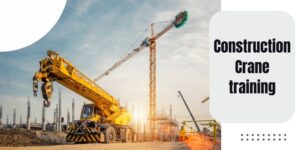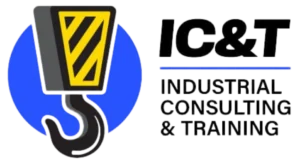
Cranes are incredible engineering equipment that allows us to lift heavy objects that are impossible for humans to lift. Operating a crane needs a proper handle to prevent potential harm. According to the US Bureau of Labor Statistics, there were a total of 297 crane-related deaths in 2011-2017. If you are handling such heavy mechanics, it is crucial to get yourself trained in construction crane training in Montana to avoid catastrophic accidents, injuries, or even fatalities.
So, in this blog, we explore the various essential safety tips to practice to reduce workplace hazards and ensure compliance with OSHA regulations.
1. Conduct Thorough Pre-Operational Inspections
Before lifting any load, a crane must be inspected rigorously. Neglecting pre-use checks can lead to mechanical failures that put lives at risk. Every operator should go through a structured inspection routine to identify any defects.
- Check structural integrity – Look for cracks, bent components, or corrosion on booms, hooks, and load-bearing parts.
- Inspect control systems – Ensure brakes, limit switches, and emergency stop buttons are fully operational.
- Hydraulic and electrical system checks – Look for fluid leaks, frayed cables, and exposed wires.
- Test communication devices – Radios and signal lights must be in working order to avoid miscommunication.
2. Properly Train and Certify Operators
A well-trained operator is the first line of defense against accidents. Without the right knowledge and hands-on skills, you are a danger to yourself and others. So, check out the specialized programs available, such as Mobile Crane Operator, Tower Crane, and Overhead Bridge Crane Certifications. OSHA requires crane operators to be certified, either through an audited in-house program or a nationally recognized certification.
- Comprehensive training matters – Operators should understand load charts, counterweights, and crane configurations.
- Hands-on experience is crucial – Book training that includes practical evaluations, not just classroom instruction.
- Rigging and signal training – Knowing how to properly attach loads and interpret hand signals prevents miscommunications.
- Continuous education – Crane technology evolves, and regulations change. Ongoing training ensures compliance and safety.
3. Follow Proper Load Handling Procedures
Load mishandling is a top cause of crane-related accidents. Excessive weight, incorrect rigging, or improper positioning can lead to catastrophic failures. Ensuring load stability is non-negotiable.
- Know the load limit – Exceeding weight capacities can cause tipping or structural damage. Always consult the crane’s load chart.
- Balance the load – Uneven distribution increases the risk of load shifting or dropping.
- Secure all rigging components – Shackles, slings, and hooks must be correctly attached and inspected.
- Monitor environmental factors – Wind speeds, ground conditions, and overhead obstacles must be considered.
Crane operators and riggers should undergo formal construction crane training in Montana to fully understand load dynamics and OSHA’s Subpart CC regulations.
4. Establish Clear Communication and Signal Systems
Miscommunication is a major contributor to crane accidents. To refine your team’s communication skills, consider Beginner Rigger/Signal Person Certifications or Advanced Rigger/Signal Person Certifications. Learning how to effectively communicate using the radios, hand signals, or designated spotters ensures smooth and safe operations.
- Use standardized hand signals – All riggers and operators must understand OSHA’s approved crane hand signals.
- Ensure clear radio communication – Background noise can interfere with instructions, so use noise-canceling headsets when possible.
- Assign a signal person – This individual must be trained and positioned where they can maintain line-of-sight with the operator.
- Confirm signals before action – Every lift should be executed only after receiving a clear and acknowledged command.
5. Create a Safe Work Environment
- Maintain proper ground conditions – Cranes require stable surfaces. Weak or uneven ground can lead to tipping.
- Control access to lift zones – Keep unauthorized personnel away from crane operations to minimize risk.
- Monitor weather conditions – Strong winds, lightning, and heavy rain make operations hazardous. Shut down when necessary.
- Implement an emergency response plan – Everyone should know what to do in case of equipment failure, power loss, or a dropped load.
Conclusion
To conclude, making sure you are practicing crane safety isn’t just about following rules. Rather, it is about protecting lives and ensuring smooth operations. So, practice pre-use inspections, proper training, correct load handling, effective communication, and a well-maintained work environment all contribute to preventing workplace accidents. Also, enroll in construction crane training in Montana at Industrial Consulting & Training to keep your team accident-free.

